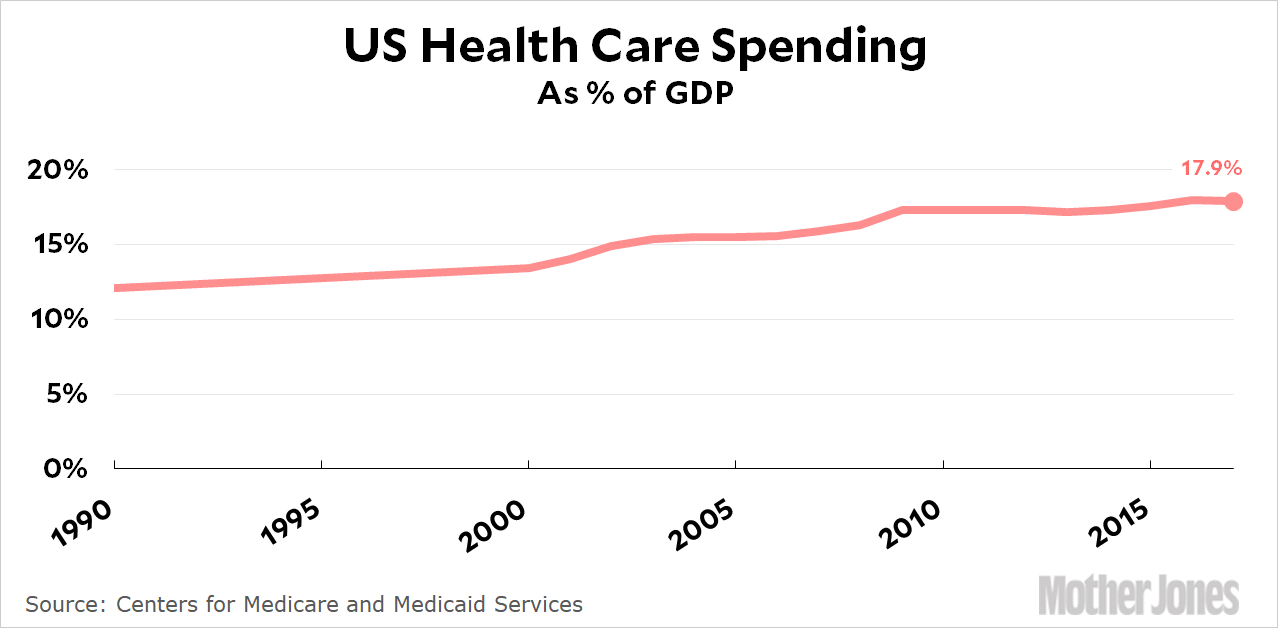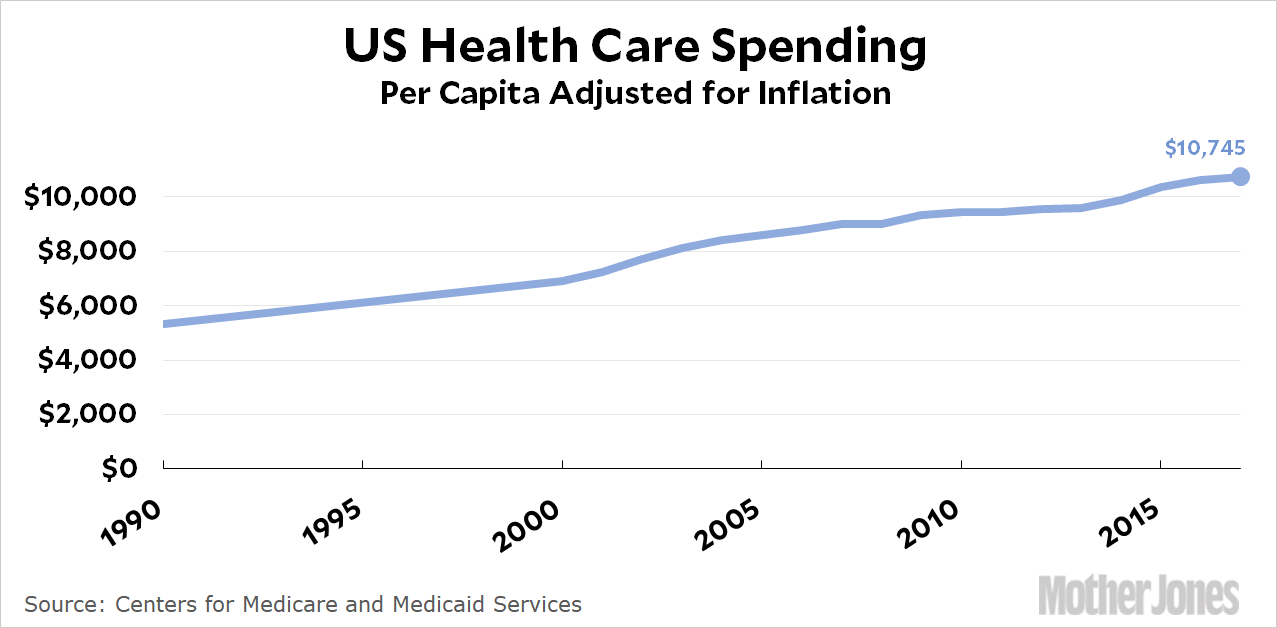
Check out the good news today:

Health care spending as a share of GDP declined in 2017. That’s only the second time this has happened in recent history, and it continues a trend of nearly zero growth since 2009. Per capita spending was up, but only slightly:

That’s a 1.1 percent increase over 2016—not quite flat, but pretty close.
We still spend way more on health care than any other country, but our growth rate has been flattening for many years. Once again, this is evidence that the spending slowdown which started in the mid-aughts wasn’t an anomaly. The enormous spike that began in the early 80s was. We’re now getting back to the 1950-1980 normal, and there’s every reason to think that’s going to last for a while.















